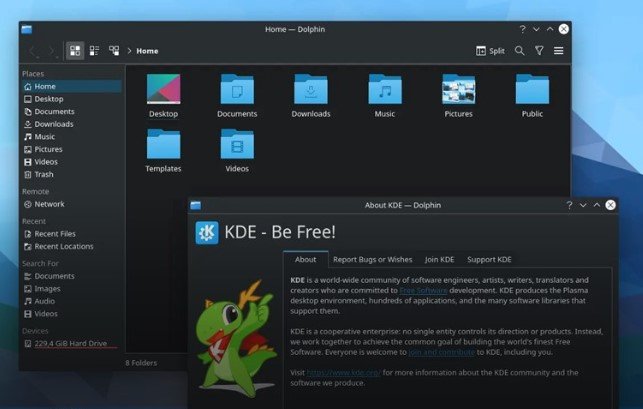Voyager Linux has emerged as a top choice for creative professionals this year, blending eye-catching design with solid performance on an Ubuntu base. In its latest alpha release on September 16, 2025, the distro adds stronger Wayland support and privacy tools, making it ideal for designers, artists, and video editors who need a smooth, secure setup without heavy marketing hype.
What Sets Voyager Linux Apart
This Ubuntu-based distribution stands out by focusing on beauty and ease of use right from the start. Users get customizable themes, animated wallpapers, and gesture controls that feel modern and intuitive. Unlike some mainstream options, Voyager runs well on mid-range hardware, so creative pros can work without slowdowns.
Many people overlook Voyager because it lacks big promotions, but its community praises the balance of style and function. For instance, it combines GNOME and Xfce desktops, letting users switch based on their workflow needs. This flexibility helps with tasks like graphic design or multimedia editing.
Recent user feedback highlights how Voyager revives older devices, turning them into powerful tools for sustainable computing. In a crowded Linux world, this distro offers a fresh take that appeals to those tired of basic interfaces.

Latest Updates and Features for 2025
The newest alpha version brings exciting changes tailored for 2025 trends. Enhanced Wayland support means better graphics rendering, which is crucial for high-resolution displays used in creative work. Privacy features now include built-in ad blockers and VPN options, addressing growing concerns about data security in open-source environments.
Developers have also upgraded the kernel to version 6.12, ensuring long-term stability with five years of updates. This ties into broader Linux shifts, like improved multimedia codecs for streaming and editing software.
Community testers report smoother performance in tasks such as video rendering and 3D modeling. These updates position Voyager as a challenger to popular distros, especially for users seeking innovation without complexity.
One key addition is AI-assisted customization, hinted at in alpha notes, which could soon help users tweak interfaces automatically. This aligns with rising interest in smart tools for creative fields.
| Feature | Description | Benefit for Creatives |
|---|---|---|
| Wayland Support | Improved graphics and rendering | Smoother workflows on high-end screens |
| Privacy Tools | Built-in VPN and ad blockers | Secure data during online collaborations |
| Gesture Controls | Intuitive touchpad and mouse gestures | Faster navigation in design apps |
| Custom Themes | Dynamic icons and wallpapers | Personalized setups for inspiration |
| Kernel Updates | Linux 6.12 with LTS | Reliable performance over years |
Benefits for Creative Professionals
Creative workers find Voyager especially useful because it supports a wide range of software out of the box. Tools like GIMP for image editing and Blender for 3D work run efficiently, thanks to optimized resource use. This means less time tweaking settings and more time creating.
Compared to other distros, Voyager offers better hardware compatibility, even on AMD and NVIDIA setups. Users in fields like digital art or music production appreciate the low overhead, which prevents crashes during long sessions.
Recent events, such as the push for open-source alternatives amid rising software costs, make Voyager timely. For example, with more remote teams using Linux for collaboration, its stable base helps avoid common pitfalls.
- Efficient Performance: Runs well on laptops with 8GB RAM, ideal for mobile creatives.
- Multimedia Focus: Pre-installed codecs support 4K video editing without extra setup.
- Community Resources: Active forums provide tips for integrating with tools like Adobe alternatives.
- Sustainability Angle: Low power use extends battery life for on-the-go work.
Challenges and Community Drive
Voyager faces competition from well-known names like Fedora or elementary OS, mainly due to limited visibility. Without corporate funding, it relies on word-of-mouth and online discussions to grow.
Yet, the community drives progress through open contributions. Enthusiasts share custom scripts and themes, fostering a vibrant ecosystem. This grassroots effort mirrors broader Linux trends, where user input leads to practical improvements.
Looking ahead, broader adoption could come from partnerships in education or creative industries. As more pros seek free alternatives to pricey systems, Voyager’s strengths in design and reliability shine.
Future Outlook for Voyager Linux
Experts predict Voyager will gain traction in 2025 as creative fields embrace open-source more. With ongoing alpha testing, the full release might include even more features, like modular ship-building tools inspired by gaming integrations seen in other updates.
This distro’s path shows how niche options can thrive through innovation. For creatives, it offers a blend of fun and function that mainstream choices often miss.
What do you think about Voyager Linux? Share your experiences in the comments below and spread the word to help this underrated gem reach more users.








